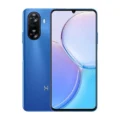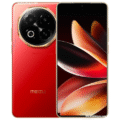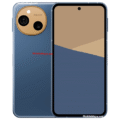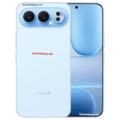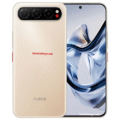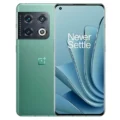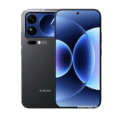Price List: Under Tk.5,000 | Tk.5001-10000 | Tk.10001-15000 | Tk.15001-20000 | Tk.20001-30000 | Tk.30001-40000 | More Mobiles
- Home
- All Mobile
- Wiko
- Wiko T60
Wiko T60
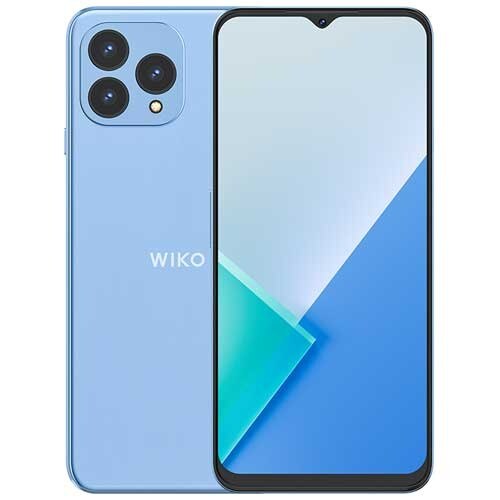


Specifications
Price in Bangladesh
| Expected Price | Coming soon |
General
| Device Type | Smartphone |
| Announced | June, 2025 |
| Released | June, 2025 |
| Status | Available |
Hardware & Software
| Operating System OS => Every computer system run on a base software called Operating System (OS). Operating System controls all basic operations of the computer (such as smartphone, PDAs, tablet computers and other handheld devices). The Operating System allows the user to install and run third party applications (apps), apps are used to add new functionality to the device. | Android |
| OS Version | v13 |
| Chipset Chipset is a group of integrated circuits designed to perform one or a more dedicated functions, often with real time computing constraints, Popular smartphones are equipped with more advanced embedded chipsets that can do many different tasks depending on their programming. | Mediatek MT8788V/WA (12 nm) |
| CPU CPU (Central Processing Unit) mostly known as processors, CPU processes instructions in order to carry out certain functions that make your device operate properly. Processors are often described as the brain of computers, smartphones and tablets, Smartphones and tablets rely on processors to carry out their every task, Processors are an incredibly important factor in selecting any type of computing device, including your smartphone. | Octa-core (4x2.0 GHz Cortex-A73 & 4x2.0 GHz Cortex-A53) |
| GPU GPU (Graphics Processing Unit) is a single-chip processor designed to rapidly manipulate and alter memory to accelerate the creation of images in a frame buffer intended for output to a display, This includes things such as lighting effects, object transformations, and 3D motion. | - |
| RAM (Memory) RAM (Random Access Memory) is a type of computer memory that can be accessed randomly, any byte of memory can be accessed without touching the preceding bytes that allows information to be stored and accessed quickly from random locations. RAM is the most common type of memory found in computer systems, smartphones, tablets and other electronic devices. | 8 GB |
Design
| Dimensions | 165.8 x 75.8 x 9.8 mm (6.53 x 2.98 x 0.39 in) |
| Weight | 217 g (7.65 oz) |
| Colors |
Black, Purple, Blue |
Display
| Display Type Display Technology => A number of display technologies and types used in mobile phones => TFT (Thin Film Transistor), IPS (In-Place Switching), OLED (Organic Light Emitting Diode), AMOLED (Active-Matrix Organic Light-Emitting Diode), Super AMOLED (an even advanced version of AMOLED), Resistive Touchscreen (Resistive touchscreens contain two layer of conductive material with a very small gap between them which acts as a resistance), Capacitive Touchsceen (Capacitive touchscreen technology consists of a layer of glass coated with a transparent conductor) | IPS LCD |
| Size | 6.58 inches, 104.3 cm2 (~83.0% screen-to-body ratio) |
| Resolution | 1080 x 2408 pixels, 20:9 ratio (~401 ppi density) |
| HDR 10 / HDR+ support |
Rear Camera
| Camera Setup | Triple |
| Main Camera | 48 MP |
| Second Camera | 2 MP |
| Third Camera | 0.3 MP |
| OIS | |
| Video | 1080p@30fps |
Front Camera
| Camera Setup | Single |
| Secondary |
24 MP |
| Video | 1080p@30fps |
Battery
| Battery Type Battery Type => Cell phones run on various kinds of batteries depending on the manufacturer, phone size or shape and features. There are basically four types of cell phone batteries => Lithium Polymer, Lithium Ion, Nickel Metal Hydride and Nickel Cadmium. | Li-Ion (Lithium Ion) |
| Placement | Non-removable |
| Capacity Battery Capacity is a measure (typically in Amp-hr) of the charge stored by the battery, and is determined by the mass of active material contained in the battery. The battery capacity represents the maximum amount of energy that can be extracted from the battery under certain conditions. | 5200 mAh |
Storage
| Storage Capacity | 256 GB |
| USB OTG |
Network
| 2G Network |
GSM 850 / 900 / 1800 / 1900 |
| 3G Network |
HSDPA 850 / 900 / 1700(AWS) / 1900 / 2100 |
| 4G Network |
1, 2, 3, 4, 5, 7, 8, 12, 13, 17, 18, 19, 20, 26, 28, 38, 39, 40, 41, 66 |
| SIM SIM (Subscriber Identity Module) is a small card that contains mobile network subscriber's account information. This allows the phone using the card to attach to a mobile network. The SIM card is most commonly associated with GSM and UMTS mobile networks. Moving a SIM card from one phone to another allows a subscriber to switch mobile phones without having to contact their mobile network carrier. SIM cards can also be used by a phone to store limited amounts of data, such as phone numbers and text messages. | Standard SIM |
Data
| GPRS GPRS (General Packet Radio Service) is a packet oriented mobile data service on the 2G and 3G cellular communication system's global system for mobile communications (GSM), Generally, GPRS is used for the purpose of wireless data transfer, such as sharing pictures and videos or browsing the Internet via a mobile phone connection. | |
| EDGE EDGE (Enhanced Data GSM Environment) is a wireless network technology generally considered the next step in the 2G network offers data transfer rates up to four times faster than ordinary GSM networks, Generally, EDGE is used for the purpose of wireless data transfer, such as sharing pictures and videos or browsing the Internet via a mobile phone connection. | |
| Speed | HSPA, LTE |
| Web Browser Web Browser => a web browser is a software application used to locate, retrieve and display content on the World Wide Web, including Web pages, images, video and other files, The primary function of a web browser is to render HTML, the code used to design or markup webpages. | HTML5 |
Messaging
| SMS SMS (Short Messaging Service) is a text messaging service component of phone, Web, or mobile communication systems. It uses standardized communications protocols to allow mobile phone devices to exchange short text messages over the networks. | Yes |
| MMS MMS (Multimedia Messaging Service) is a standard way to send messages that include multimedia content (audio clips, video clips and images) to and from mobile phones over wireless networks using the WAP protocol. | |
| Email Email (Electronic Mail) is a system for receiving, sending, and storing electronic messages, Similar to a letter, email is text messages that may contain files, images, or other attachments sent via the internet to a recipient by using applications and software prograps. An email address is required to receive email, and that address is unique to the user. | Yes |
| IM IM (Instant Messaging) is an exchange of text messages through a software application, it enable you to create a kind of private chat room with another individual in order to communicate in real time over the Internet. | Yes |
Connectivity
| Bluetooth Bluetooth is a wireless communications technology for exchanging data between mobile phones, headsets, computers and other network devices over short distances without wires, Bluetooth technology was primarily designed to support simple wireless networking of personal consumer devices. | 4.2, A2DP |
| Wi-fi Hotspot | |
| Infrared Infrared connectivity is an old wireless technology used to connect two electronic devices. It uses a beam of infrared light to transmit information and so requires direct line of sight and operates only at close range. | |
| USB | USB Type-C 2.0 |
| GPS GPS The Global Positioning System is a satellite-based radio navigation system, GPS permits users to determine their position, velocity and the time 24 hours a day, in all weather, anywhere in the world, In order to locate your position, your device or GPS receiver must have a clear view of the sky. | GPS, GLONASS, GALILEO |
| NFC NFC (Near field communication) is a set of standards for smartphones and similar devices to establish peer-to-peer radio communications with each other by touching them together or bringing them into proximity, usually no more than a few inches. |
Media
| FM Radio | Unspecified |
| Loudspeaker | Yes |
| 3.5mm Jack | Yes |
Sensors & Security
| Fingerprint Sensor |
More
| Made By | China |
Performance Tests
Wiko T60 Price in Bangladesh
The Wiko T60 is expected to launch soon in Bangladesh, with an anticipated price positioning it comfortably within the mid-range segment. It comes with a generous 256GB of internal storage, catering well to users who demand ample space for apps, media, and files.
This mid-range smartphone, released in June 2025, strikes a balance between performance and affordability. The Wiko T60 stands out with its large 6.58-inch Full HD+ display, a versatile triple rear camera setup highlighted by a 48MP primary sensor, and a substantial 5200mAh battery designed for long-lasting use. Running on Android 13 with a MediaTek MT8788V chipset, it offers smooth multitasking and efficient daily performance. With its combination of solid design, capable cameras, and robust battery life, the Wiko T60 appeals to users seeking a reliable device without breaking the bank.
Wiko T60 Specifications
Display and Design
The Wiko T60 features a sizable 6.58-inch IPS LCD panel with a sharp resolution of 1080 x 2408 pixels, delivering a crisp viewing experience at approximately 401 pixels per inch. The screen supports HDR10 and HDR+ content, enhancing color and contrast for media consumption. Its display covers around 83% of the front, offering an immersive visual area with a 20:9 aspect ratio.
In terms of design, the device measures 165.8 x 75.8 x 9.8 mm and weighs 217 grams, providing a sturdy yet comfortable hold. Available in Black, Purple, and Blue, the phone combines functional aesthetics with a modern look suited to everyday use.
Performance and Processor
Powering the Wiko T60 is the MediaTek MT8788V chipset, built on a 12nm process. It employs an octa-core CPU configuration comprising four Cortex-A73 cores and four Cortex-A53 cores, all clocked at 2.0 GHz. This setup, paired with 8GB of RAM, ensures smooth multitasking, efficient app management, and decent gaming capabilities for a mid-range phone.
While the GPU specifics aren’t disclosed, the device handles general tasks and moderate gaming well, making it suitable for users who want responsive performance without premium-level specs. The generous 256GB internal storage is non-expandable but ample for most users.
Camera and Video
The Wiko T60 sports a triple rear camera system with a 48MP main sensor that captures detailed and vibrant photos. Complementing this are a 2MP secondary camera and a 0.3MP tertiary sensor, which likely assist with depth sensing and macro or low-light shots.
For selfies and video calls, the front-facing 24MP camera delivers sharp images with 1080p video recording at 30fps. The rear cameras also record videos in Full HD at 30fps. While lacking features like 4K video or optical image stabilization (OIS), the phone offers basic AI enhancements and HDR support to improve photo quality, especially in well-lit environments.
Battery and Charging
Equipped with a large 5200mAh lithium-ion battery, the Wiko T60 is built to last through a full day of heavy usage. The non-removable battery supports standard charging but does not specify fast or wireless charging capabilities. Thanks to the efficient 12nm chipset and Android 13 optimizations, the phone maintains good power management, though charging times may be average compared to some competitors.
Connectivity and 5G Support
The Wiko T60 supports a wide range of network bands across 2G, 3G, and 4G LTE, but it does not include 5G connectivity, positioning it firmly in the 4G mid-range category. It features a single standard SIM slot.
Connectivity options include Bluetooth 4.2 with A2DP, Wi-Fi hotspot capabilities, USB Type-C 2.0 for charging and data transfer, GPS with GLONASS and GALILEO support, and NFC for contactless payments. An infrared sensor and a 3.5mm headphone jack add to its versatile connectivity features.
Additional Features
For security, the Wiko T60 includes a fingerprint sensor for quick and secure unlocking. The device runs on Android 13 out of the box, offering the latest software enhancements and security patches.
Additional perks include an FM radio, loudspeaker support, and standard sensors such as accelerometer and proximity. Although it does not boast water resistance or stereo speakers, it delivers a reliable, no-frills smartphone experience.
Reason to Buy
- Large, vivid 6.58-inch Full HD+ display with HDR support for immersive viewing
- Versatile triple rear cameras with a high-resolution 48MP main sensor
- Generous 5200mAh battery ensuring extended usage without frequent charging
- Spacious 256GB storage paired with 8GB RAM for smooth multitasking and ample file space
- Modern Android 13 OS with fingerprint security and NFC functionality
- Attractive mid-range pricing with a balanced feature set
Verdict
The Wiko T60 emerges as a strong contender in the mid-range smartphone market, offering a blend of solid design, capable cameras, and a robust battery. Its large Full HD+ display and versatile camera setup cater well to users who prioritize media consumption and photography on a budget. Although it lacks 5G connectivity and fast charging, the phone’s overall performance and feature package make it ideal for everyday users looking for a reliable and stylish device without premium pricing.
FAQ
Q: Does the Wiko T60 support 5G?
A: No, the Wiko T60 supports 2G, 3G, and 4G LTE networks but does not have 5G capabilities.
Q: Can I expand the storage on Wiko T60?
A: No, the phone offers 256GB of internal storage with no option for expansion via microSD.
Q: What is the battery capacity and charging type?
A: The device has a 5200mAh non-removable battery and charges via USB Type-C, but it does not support fast or wireless charging.
Q: What version of Android does Wiko T60 run?
A: It runs on Android 13, providing the latest features and security updates.
Q: How good is the camera performance on the Wiko T60?
A: The triple rear camera setup with a 48MP main sensor delivers good photo quality in well-lit conditions, suitable for casual photography.
User Reviews
Disclaimer Note
We do not guarantee that the information of this page is 100% accurate and up to date.



